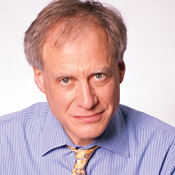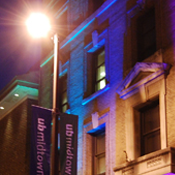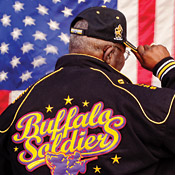Alumni Profile: Jeffrey Kluger, J.D. ’79
Category: WebExtras

photo courtesy of Jeffrey Kluger
Of course you’ve seen Tom Hanks, Gary Sinese and Ed Harris in Apollo 13—who hasn’t? Here, Kluger shares his inside scoop on the book that inspired Ron Howard’s Oscar-winning film and on what it was like both behind the scenes and in front of the camera during the filming.
UB: How did you come to write Apollo 13?
Kluger: I’ve always been a space nut, and while anyone could write about John Glenn or Neil Armstrong, you really had to be a connoisseur to admire Jim Lovell. He flew four times, and every one of them was a first-time flight. He flew Gemini 7 as well as Apollo 8—which was the first manned flight to orbit the moon—and in April 1970, he flew on Apollo 13.
In 1991, I called Richard Kluger, my uncle, who won a Pulitzer in 1996, and asked him what I needed to do to get a publisher. He advised me to get in touch with Jim Lovell. If Lovell would agree to cooperate with me, I would have a much better chance of being published. I wrote Lovell, who had just retired, and he wrote me back saying that perhaps we could collaborate.
UB: How did you and Jim Lovell work together?
Kluger: He lives in Lake Forest, Ill., and Horseshoe Bay, Texas. We met in person in Chicago and New York a lot, but much of the research was done by phone as well as by mail. And I visited NASA a number of times. As Jack Swigert was no longer living, and Fred Haise was too busy to participate in the project, Jim Lovell was the only one of the team that I worked with.
At the time, we had an advance from Houghton Mifflin, which published the book in 1994. That advance, as well as a column I wrote for Discover magazine and some other freelance work, kept me financially afloat.
UB: When director Ron Howard’s company, Imagine Entertainment, committed to making the movie in 1994, you were hired as a paid consultant. What kind of an experience was it to be on the set?
Kluger: Getting paid as a consultant can often be “go-away” money to prevent you from being a pest. But in this case, I really did hang around and really did get a chance to contribute to the film.
As for the cast, people often think the reputation of Tom Hanks as a nice guy is exaggerated. … But he’s the genuine article. When my first daughter was born, he and his wife sent a gift basket. When our second daughter was born, my wife and I sent out an announcement but requesting no gifts. Tom, nonetheless, sent our daughter a copy of the Declaration of Independence and the Constitution with a note saying something along the lines of “These are some powerful words you should keep with you always.”
Ed Harris was a bit edgier as an actor. What those watching the movie see is Harris in the “lucky” vest that his wife made him and that he wore throughout the missions while playing the consummate NASA professional. What they don’t see is that in one scene, when he was sitting down, he was also wearing a pair of very hot pink Bermuda shorts.
Gary Sinese was very earnest, very serious and committed to learning his character in a very deep way. Interestingly, he could have played either the role of Swigert or Haise, which were more central roles—and certainly more conspicuous ones. But he chose to play Ken Mattingly because he saw that as more complex and poignant.
UB: You actually have a small part in the movie?
Kluger: Ron Howard needed some way to explain to the general public just what was going on with the crew and the spacecraft. He asked me to write some material for a newscaster and then asked if I was interested in playing that part. I said sure, and he told me that I would have to get a haircut. I told him that was fine [and that] I knew I needed a haircut. His response was, “Oh, not the kind we are going to give you. …”
That’s how I came to use a basketball and a softball, representing the earth and the moon, to explain what was going on to a nonscientific audience in a way that was understandable.
UB: After your film debut in Apollo 13, did you have any desire to change careers, perhaps spending time on the red carpet?
Kluger: Well, I’ve indeed thought about it a lot over the years and had the movie bug for a while. So far, none of my other books has been bought by Hollywood, but my 2005 book on Jonas Salk and the polio vaccine [Splendid Solution: Jonas Salk and the Conquest of Polio] was optioned by a studio and has gotten some nibbles of interest since.
I’m currently working on a film project with a production company in China. It could conceivably be a very big movie over there, or [it] could come to nothing at all, which I’ve learned to accept is pretty much the way of the movie business around the world.
Read the Main Article

Alumni Profile: Jeffrey Kluger, J.D. ’79
The Time senior writer leaves Apollo 13 behind and tackles what he calls the “sibling effect” in his latest book.




